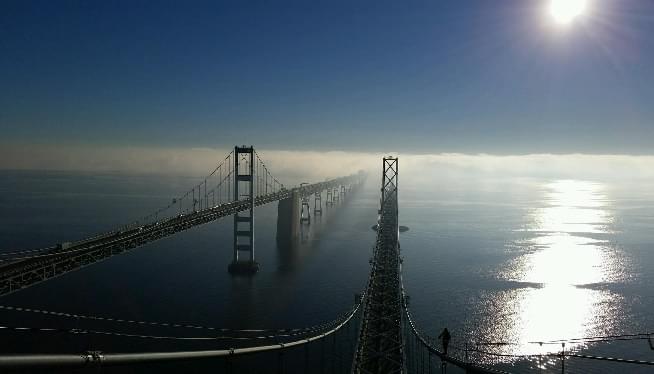Steve Burns
WMAL.com
CHESTERTOWN, MD – (WMAL) Maryland officials have begun their slate of public meetings as the debate heats up around where a new Chesapeake Bay crossing can be located.
State transportation officials estimate backups at the current Bay Bridge could stretch over ten miles within a few decades, necessitating a new crossing that could be built in a variety of locations. Among those getting more scrutiny is a crossing somewhere from the Baltimore region across to Kent County, another crossing parallel to the existing one from Anne Arundel County, or a bridge in Southern Maryland.
Many on the Eastern Shore remain skeptical that a new crossing is even needed.
“I think that this is perhaps a solution in search of a problem,” John Seidel, an Environmental Studies professor at Washington College in Chestertown, told WMAL. “I’m not convinced that we really have the need for it at this point.”
Seidel cites Maryland’s gradual transition to electronic tolling that will likely cut down on congestion at the existing bridge, and the potential effects of autonomous vehicles.
“There’s a great deal of public sentiment against a bridge crossing here in Kent County,” he said.
The Eastern Shore Land Conservancy has come out against a new bridge not just in Kent County, but anywhere across the bay.
“You have to get a majority of the nine counties to agree to a location if a new bridge were to come. It’s hard to imagine how that would happen,” the conservancy’s Josh Hastings told WMAL.
Hastings said the eastern Shore is home to some of the most fertile soil on the East Coast, and a bridge would likely disrupt the region’s thriving agricultural industry even further.
“We don’t want to cut ourselves off from ever growing. Obviously, that’s certainly not the case,” Hastings said. “But we don’t want to do so that’s growing on top of vital resources.”
Hastings mentioned ferries or dynamically-priced tolling that could help to cut down on traffic at the current spans.
Maryland Governor Larry Hogan announced the effort to build another crossing nearly two years ago, and since then the early plans have been going through the usual approval process, including a study through the National Environmental Policy Act. The state is expected to release a formal list of options later this year.
Seidel has seen previous efforts for a new crossing come and go, but he said this one feels different.
“For some reason, and I can’t quite put my finger on it, I sense that it is more serious this time,” he said. “I sense that it’s for real.”
Copyright 2018 by WMAL.com. All Rights Reserved. (PHOTO: MDTA/Facebook)





















